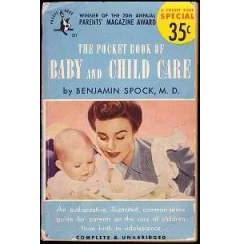The title of this section refers to a well-known biological phenomenon. The python family of snakes have hinged jaws that allow them to swallow animals much larger than their heads. These animals are gradually consumed as they pass through the snake’s digestive system. If the prey is very large, you can plainly see the shape of the animal as it moves through the snake.
It is just as easy to identify the progress of the Baby Boom generation through the American population. Whatever stage of life the Boomers were experiencing, the country was experiencing. And we all experienced it together. (see my timeline at The Boomer Bust) Although the pure size of the Boomer generation underlies a lot of its impact, there were two other factors, commonality and competitiveness, that greatly enhanced it.
I grew up in the industrial Middle-Atlantic Northeast. “Ethnicity” in my world meant Polish, Italian, German or Irish. Of course we had discrimination, bigotry and ghettos. I cringe at some of the racist nursery rhymes I was taught by my friends. (Thankfully, if I recited them at home my parents quickly explained why those words were bad.) But we didn’t have Jim Crow laws, or poll tests, and although my schools were largely white, it was as a reflection of the neighborhood, not of the law.
I had no idea what rhubarb or okra were until I was an adult. I had never heard of ice fishing. Iced tea came in one flavor; if you wanted it sweet you put sugar in it. When I was 20 or so, I remember reading a debate in a restaurant industry magazine about whether America was ready to accept a regional ethnic food as mainstream…pizza! I had a pizza parlor on virtually every corner. It shocked me to realize that everyone else didn’t.
Like most early Boomers, I grew up in a culture that was defined by regional and ethnic dominance. Children had for generations grown up with roughly the same attitudes, the same ideas, and the same habits as their parents. They just hadn’t experienced much else.
Then came television. The first stations broadcast in the late 1930’s, and television was a huge hit at the 1939 World’s Fair in New York, but WWII had put a stop to production of TV sets. Returning GIs were ready to spend on consumer goods, and factories built for  wartime electronics production were more than ready to deliver. In 1948 the first networks began broadcasting syndicated content, and in 1951 color televisions first became available. The oldest Boomers were 6 years old.
wartime electronics production were more than ready to deliver. In 1948 the first networks began broadcasting syndicated content, and in 1951 color televisions first became available. The oldest Boomers were 6 years old.
Unlike almost every other country, the United States developed television as a private enterprise. As in radio, content was paid for by commercial advertising. In fact, many of the consumer brands that made radio so successful were the first to move headlong into the new medium.
Thus people watching television became “consumers.” The success of a show was determined by the number of products it sold. How long do you think it took for these advertisers to figure out that two out of every five people in the country could be targeted as a distinct audience? For the first time, a generation was identified as a market, and sold to by age, not by the regional or ethnic orientation of their parents.
The WWII generation had already proven their willingness to spend on their kids. Scarred by the Great Depression, they focused on working to give their kids got the things they had lacked. They  started by making Benjamin Spock’s 1946 book, The Common Sense Book of Baby and Child Care a huge hit, buying 500,000 copies in its first six months. Children’s toys, books and shows quickly became an entire segment of the marketing industry.
started by making Benjamin Spock’s 1946 book, The Common Sense Book of Baby and Child Care a huge hit, buying 500,000 copies in its first six months. Children’s toys, books and shows quickly became an entire segment of the marketing industry.
For the first time, children were growing up encouraged to perceive themselves as children. They weren’t little adults in training. They weren’t just future farmers, or future factory workers. They were taught by parents and advertisers to think of themselves as children first, and as the life successors of their parents second.
And, for better or worse, 78,000,000 of them were all being raised pretty much the same way, at the same time.
Commonality made the Boomers a cohesive force in the American culture and economy like no generation before them. But sometimes that commonality took on the aspects of a school of fish, where thousands of individuals all turn in the same direction at the same time. This happened again and again and, as you will see, not least in the transformation of small business in America.
When it was combined with Boomer competitiveness, it changed everything. Next week, how the American Baby Boomers became the hardest workers in modern history.
